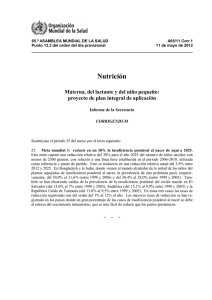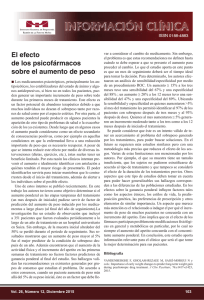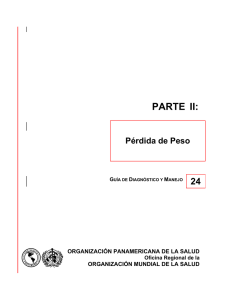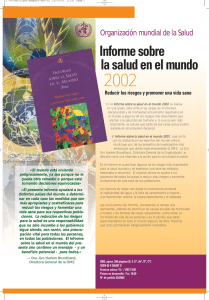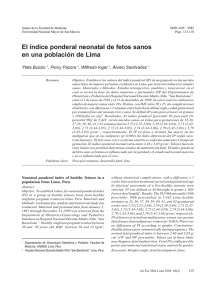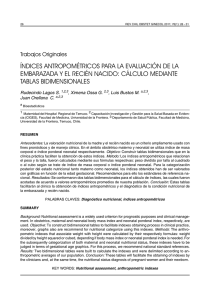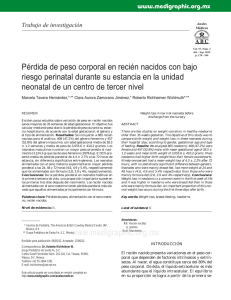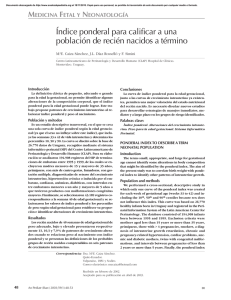Valor del índice ponderal fetal y neonatal en el R.C.I.U. asimétrico.
Anuncio
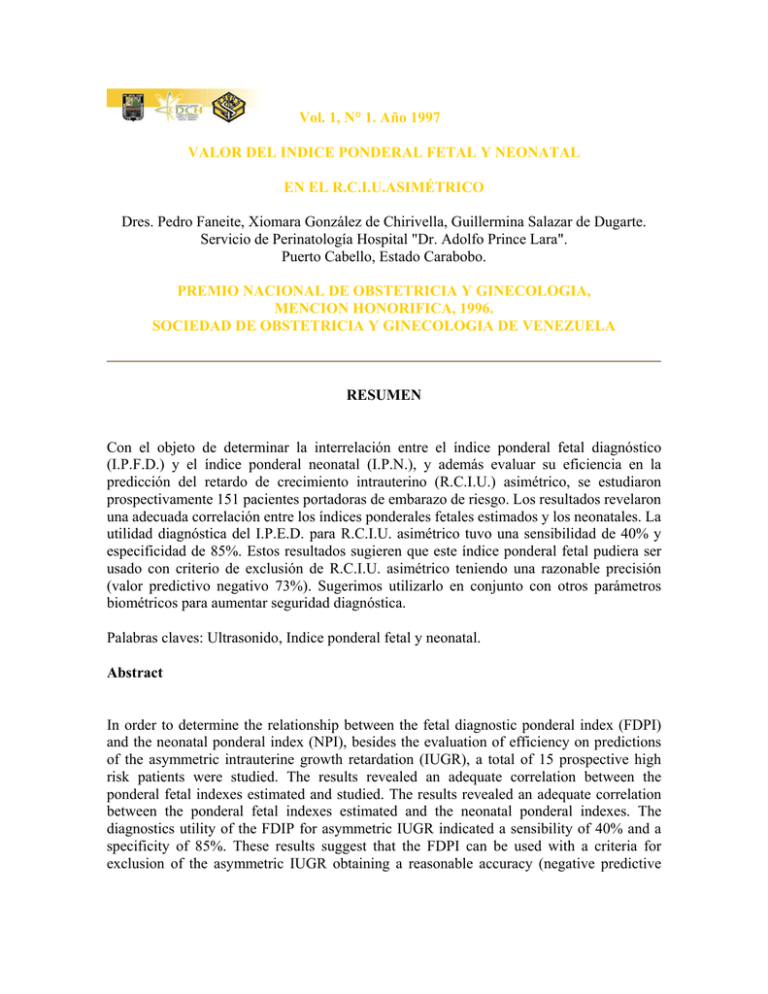
Vol. 1, N° 1. Año 1997 VALOR DEL INDICE PONDERAL FETAL Y NEONATAL EN EL R.C.I.U.ASIMÉTRICO Dres. Pedro Faneite, Xiomara González de Chirivella, Guillermina Salazar de Dugarte. Servicio de Perinatología Hospital "Dr. Adolfo Prince Lara". Puerto Cabello, Estado Carabobo. PREMIO NACIONAL DE OBSTETRICIA Y GINECOLOGIA, MENCION HONORIFICA, 1996. SOCIEDAD DE OBSTETRICIA Y GINECOLOGIA DE VENEZUELA RESUMEN Con el objeto de determinar la interrelación entre el índice ponderal fetal diagnóstico (I.P.F.D.) y el índice ponderal neonatal (I.P.N.), y además evaluar su eficiencia en la predicción del retardo de crecimiento intrauterino (R.C.I.U.) asimétrico, se estudiaron prospectivamente 151 pacientes portadoras de embarazo de riesgo. Los resultados revelaron una adecuada correlación entre los índices ponderales fetales estimados y los neonatales. La utilidad diagnóstica del I.P.E.D. para R.C.I.U. asimétrico tuvo una sensibilidad de 40% y especificidad de 85%. Estos resultados sugieren que este índice ponderal fetal pudiera ser usado con criterio de exclusión de R.C.I.U. asimétrico teniendo una razonable precisión (valor predictivo negativo 73%). Sugerimos utilizarlo en conjunto con otros parámetros biométricos para aumentar seguridad diagnóstica. Palabras claves: Ultrasonido, Indice ponderal fetal y neonatal. Abstract In order to determine the relationship between the fetal diagnostic ponderal index (FDPI) and the neonatal ponderal index (NPI), besides the evaluation of efficiency on predictions of the asymmetric intrauterine growth retardation (IUGR), a total of 15 prospective high risk patients were studied. The results revealed an adequate correlation between the ponderal fetal indexes estimated and studied. The results revealed an adequate correlation between the ponderal fetal indexes estimated and the neonatal ponderal indexes. The diagnostics utility of the FDIP for asymmetric IUGR indicated a sensibility of 40% and a specificity of 85%. These results suggest that the FDPI can be used with a criteria for exclusion of the asymmetric IUGR obtaining a reasonable accuracy (negative predictive value of 73%). We suggest its use in conjunction with other biometrics parameters to increase the safety in diagnostics.
